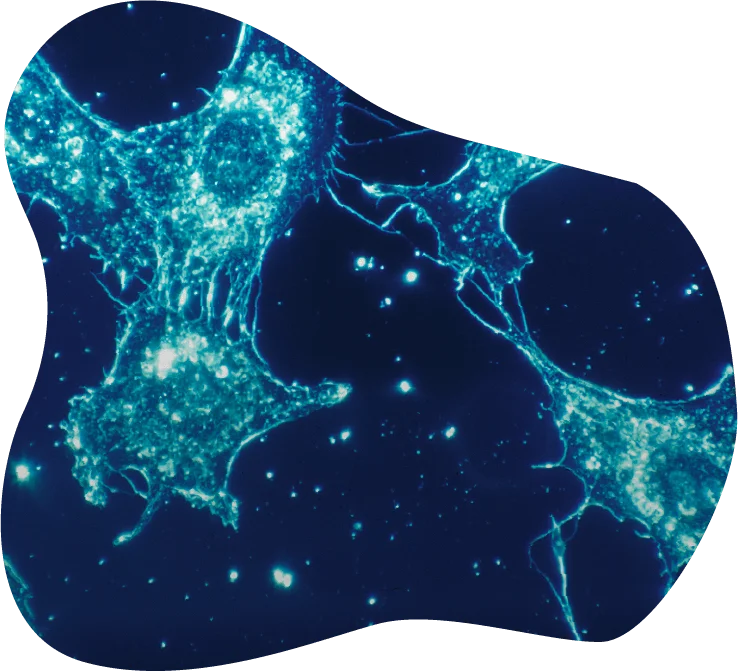Product Category
- Human MicroRNA Agomir/Antagomir
- Mouse MicroRNA Agomir/Antagomir
- Rat MicroRNA Agomir/Antagomir
- Other MicroRNA Agomir/Antagomir
- Adult Stem Cells
- Cancer Stem Cells
- Embryonic Stem (ES) Cells
- Induced Pluripotent Stem Cells (iPSCs)
- Mesenchymal Stem Cells (MSC)
- Knockout Stable Cell Lines
- Knockin Stable Cell Lines
- Knockdown Stable Cell Lines
- Overexpression Stable Cell Lines
- Reporter Stable Cell Lines
- Knockout Cell Lysate
Species
- Human
- Monkey
- Mouse
- Rat
Disease
- Normal
Organ
- Bone Marrow
- Lymphatic Vessel
- Thymus
Cell Type
- Endothelial
- Macrophage
- Neutrophil
Showing all 10 results
Sort by
View
-
 Primary Cells |
Primary Cells |ABC-TC137D
Luciferase Expressing Rat Bone Marrow Neutrophils
Cell TypeNeutrophil
Source OrganBone Marrow
Storage ConditionLiquid Nitrogen
To Explore -
 Primary Cells |
Primary Cells |ABC-TC136D
Luciferase Expressing C57BL/6 Mouse Bone Marrow Neutrophils
Cell TypeNeutrophil
Source OrganBone Marrow
Storage ConditionLiquid Nitrogen
To Explore -
 Primary Cells |
Primary Cells |ABC-TC132D
Luciferase Expressing Rat Bone Marrow Macrophages
Cell TypeMacrophage
Source OrganBone Marrow
Storage ConditionLiquid Nitrogen
To Explore -
 Primary Cells |
Primary Cells |ABC-TC131D
Luciferase Expressing C57BL/6 Mouse Bone Marrow Macrophages
Cell TypeMacrophage
Source OrganBone Marrow
Storage ConditionLiquid Nitrogen
To Explore -
 Primary Cells |
Primary Cells |ABC-TC119D
Luciferase Expressing Rat Thymus Endothelial Cells
Cell TypeEndothelial
Source OrganThymus
Storage ConditionLiquid Nitrogen
To Explore -
 Primary Cells |
Primary Cells |ABC-TC118D
Luciferase Expressing C57BL/6 Mouse Thymus Endothelial Cells
Cell TypeEndothelial
Source OrganThymus
Storage ConditionLiquid Nitrogen
To Explore -
 Primary Cells |
Primary Cells |ABC-TC109D
Luciferase Expressing Rat Lymphatic Endothelial Cells
Cell TypeEndothelial
Source OrganLymphatic Vessel
Storage ConditionLiquid Nitrogen
To Explore -
 Primary Cells |
Primary Cells |ABC-TC108D
Luciferase Expressing Monkey Lymphatic Endothelial Cells
Cell TypeEndothelial
Source OrganLymphatic Vessel
Storage ConditionLiquid Nitrogen
To Explore -
 Primary Cells |
Primary Cells |ABC-TC107D
Luciferase Expressing Human Lymphatic Endothelial Cells
Cell TypeEndothelial
Source OrganLymphatic Vessel
Storage ConditionLiquid Nitrogen
To Explore -
 Primary Cells |
Primary Cells |ABC-TC106D
Luciferase Expressing C57BL/6 Mouse Lymphatic Endothelial Cells
Cell TypeEndothelial
Source OrganLymphatic Vessel
Storage ConditionLiquid Nitrogen
To Explore



